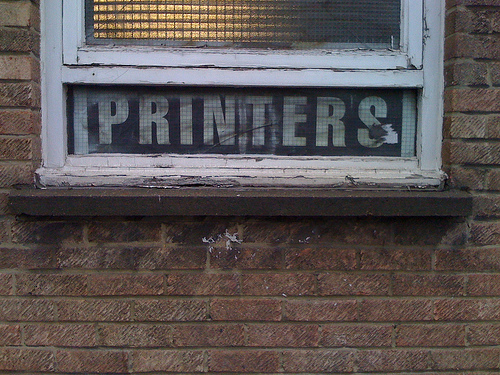Send your question to Umbra!
Q. Dear Umbra,
I need to get a new printer for my office to replace my now-beyond-repair one. I know inkjets seem to be more wasteful with cartridges, and the ink may make the paper less recyclable, and lasers use more power to run, but which one is the greenest option? I avoid printing unless it seems necessary, but I do from time to time need to print things so I want to make the best chose possible here.
Many thanks,
Christian
East Granby, Conn.
 Oh, if only printers could be completely obsolete!Photo: Tom TaylorA. Dearest Christian,
Oh, if only printers could be completely obsolete!Photo: Tom TaylorA. Dearest Christian,
Thanks for remembering the first and most important R, reduce. You’ve saved me a lot of time. In fact, I think I’m going to make myself a soy milkshake and come back in the time it would’ve taken me to urge you to print less.
It’s impressive that the printer industry hasn’t gone out of business altogether, what with things like Google Docs, email attachments, electronic signatures, and the like. But you’re right, sometimes you just have to print out that resume before a job interview (or Sudoku, or whatever the kids are doing these days). Have you considered going printerless and using the one at your local library or neighborhood print shop? You knew I had to ask …
If you’re set on buying, don’t hate the inkjet quite yet. Oregon State University engineers just figured out a way to print solar cells using inkjet printers — and the process cuts down on waste by 90 percent. (Granted, we can’t print our own solar panels at home yet, but still.) They’re more energy-efficient than laser printers, too. But I’d argue that even more important than energy use is what’ll happen to your printer when you’re done with it. Electronics have such a short lifespan (thanks, planned obsolescence … ) that you have to think ahead to your printer’s burial before you even buy it. When you’re shopping around, note prospective computers’ take-back policy. Can you mail in used cartridges? Is the printer itself recyclable in any way? I try to be brand-agnostic, but HP is the only printer company that didn’t flunk the Electronics TakeBack Coalition’s report card on recycling and take-back programs. One model purports to be made of 50 percent recycled plastic. I know, I know, plastic, but it’s a start.
Once you’ve got your shiny new soon-to-be-obsolete printer — and pick an Energy Star printer, which potentially uses 60 percent less juice than its non-starred counterparts — take advantage of its power-saving features. Make sure they’re enabled, first off, and maximize your computer’s narcolepsy. You want that thing to go to sleep quickly and often, because it probably spends most of the day unused. Use a power strip to easily turn it off altogether (along with any other computer peripherals) overnight, on weekends, or whenever makes sense. And use free tools like GreenPrint to preview your doc before you print it, spot wasteful pages, and cut ’em out. Print on both sides (“duplex printing”) and tweak the ink settings to print in low quality or use the smallest amount of ink possible.
Christian, keep that first R in mind, and you’ll be a regular prints charming.
Inkily,
Umbra



